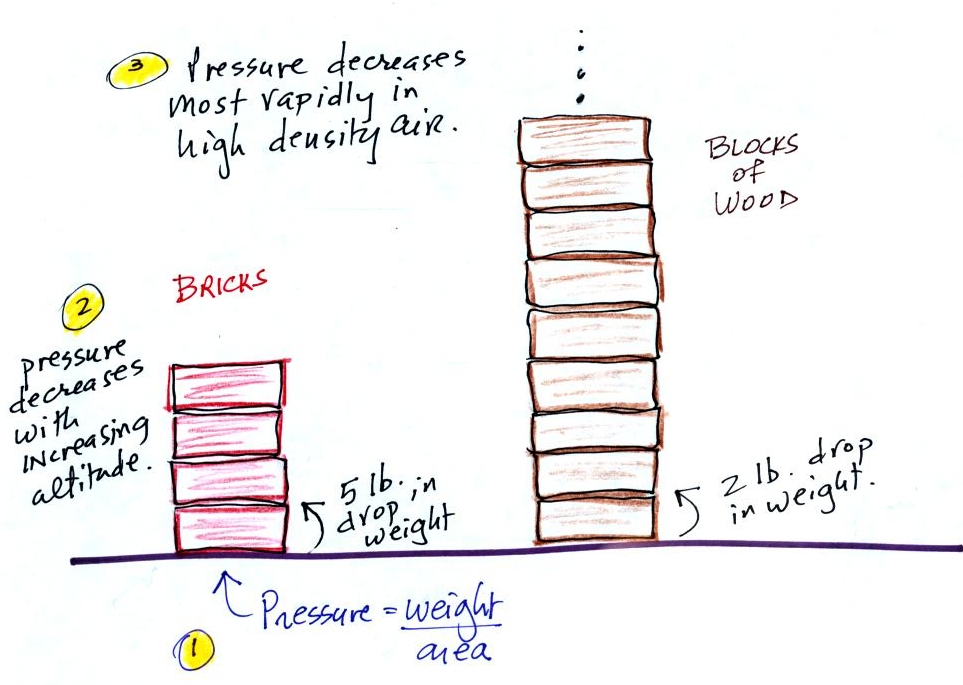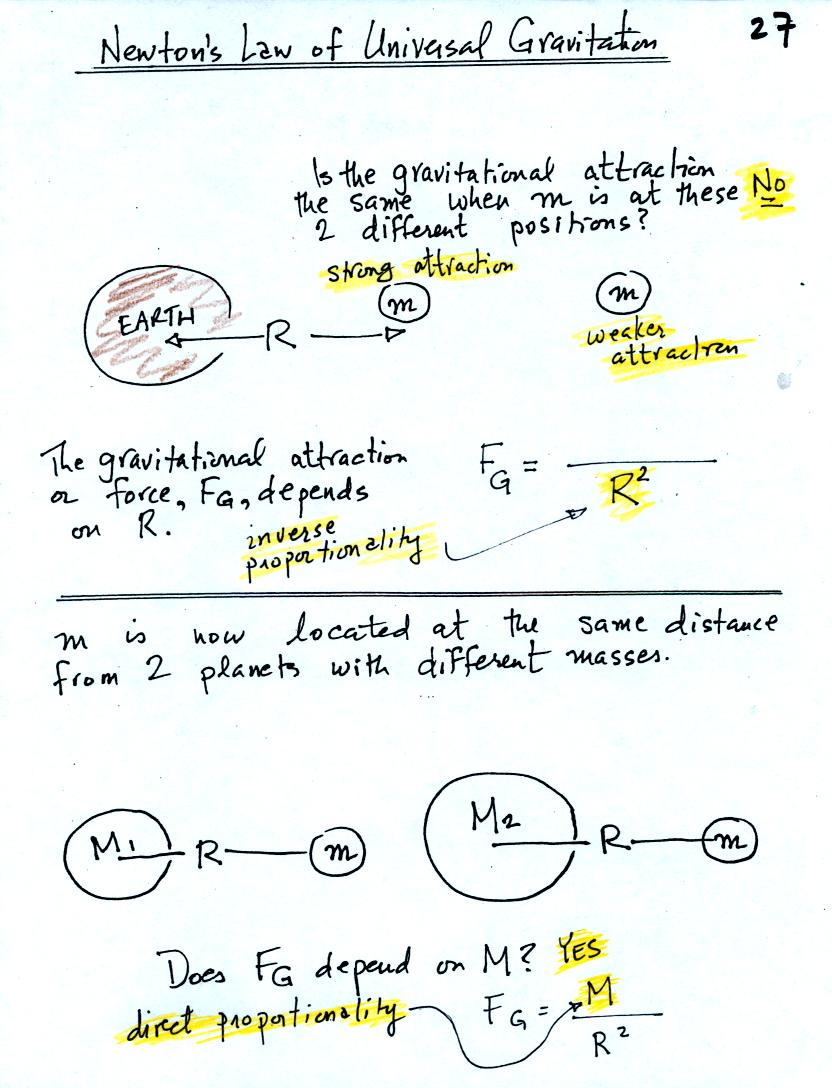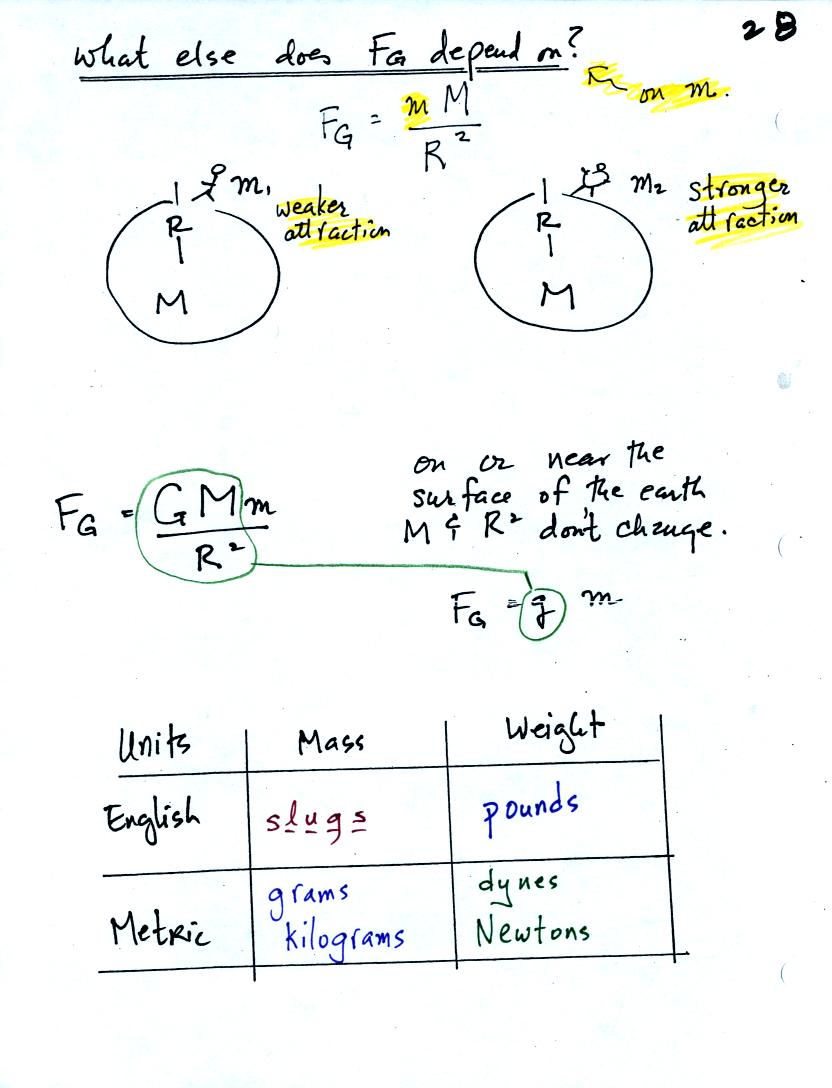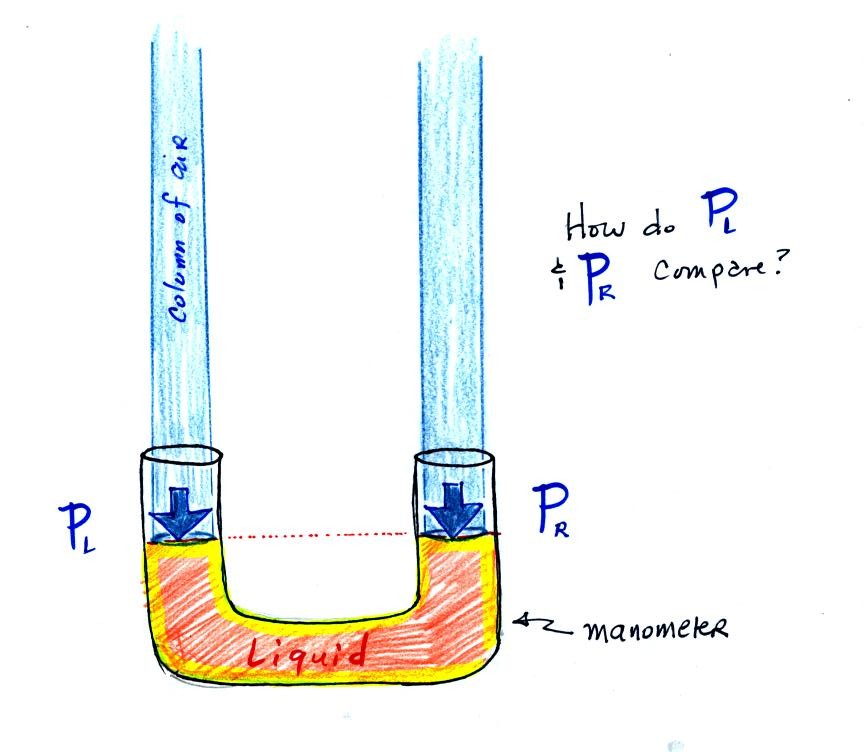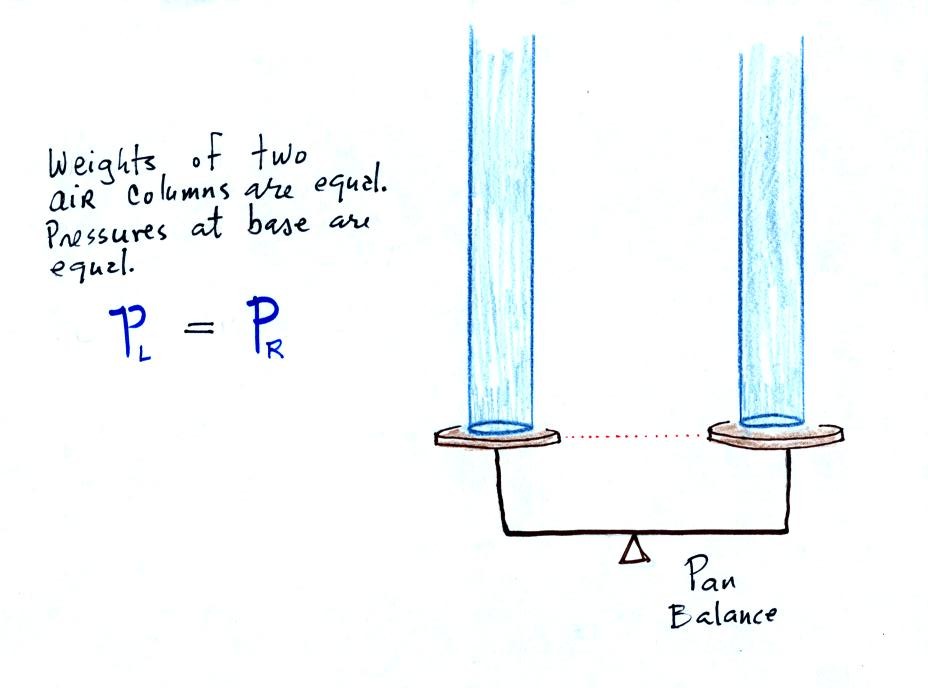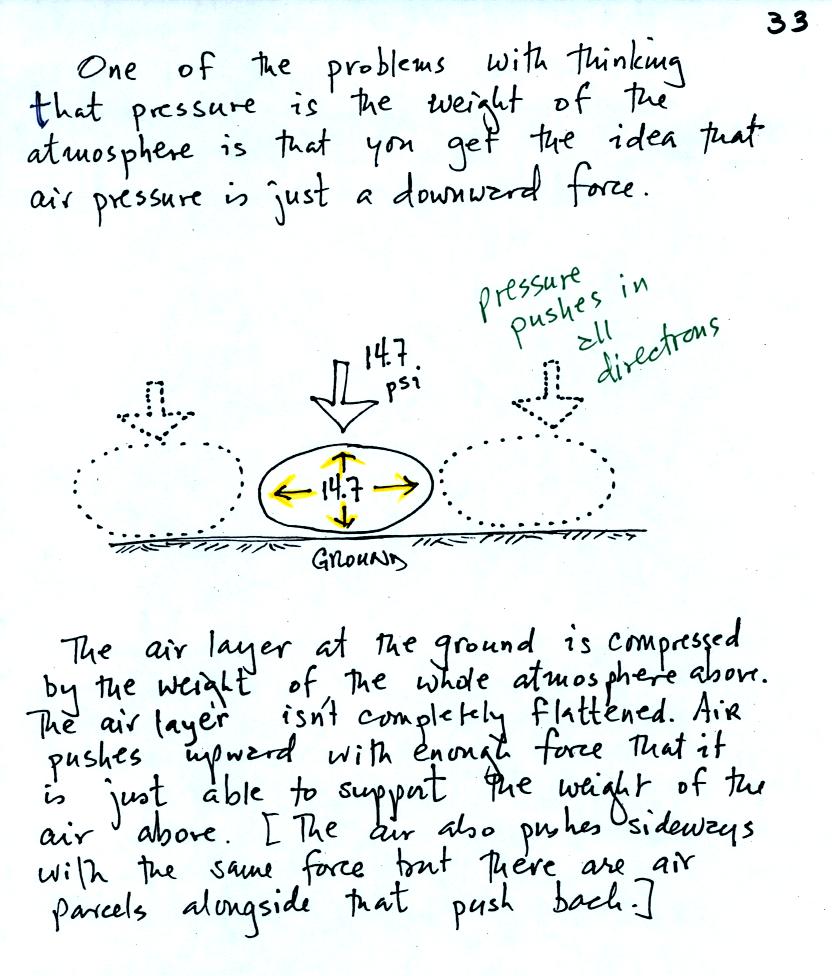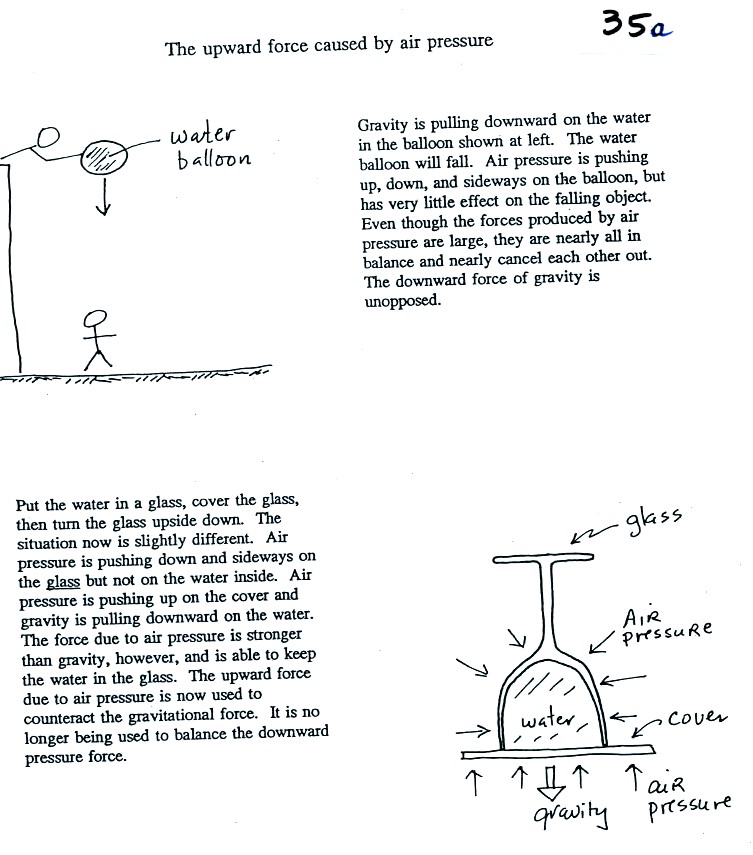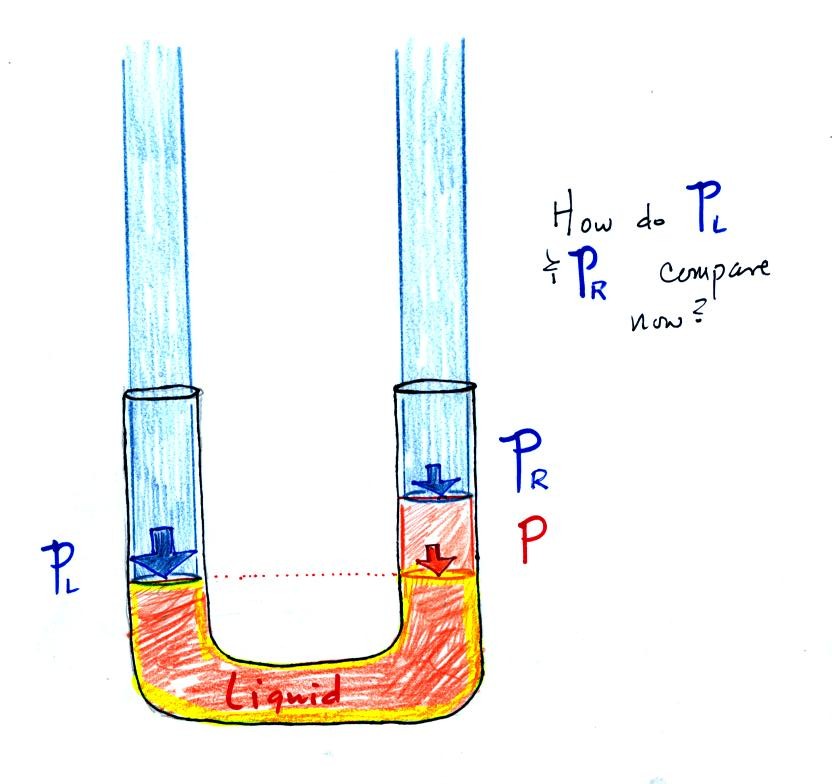
Now the situation is a little
different,
the
liquid levels
are no
longer equal. You probably realize that the air pressure on the
left, PL, is a little higher than the air pressure on the
right,
PR. PL is now being balanced by PR
+ P acting together. P
is the pressure produced by the weight of the extra fluid on the right
hand side of
the manometer (the fluid that lies above the dotted line). The
height of the column of extra
liquid provides a measure of the difference between PL and PR.
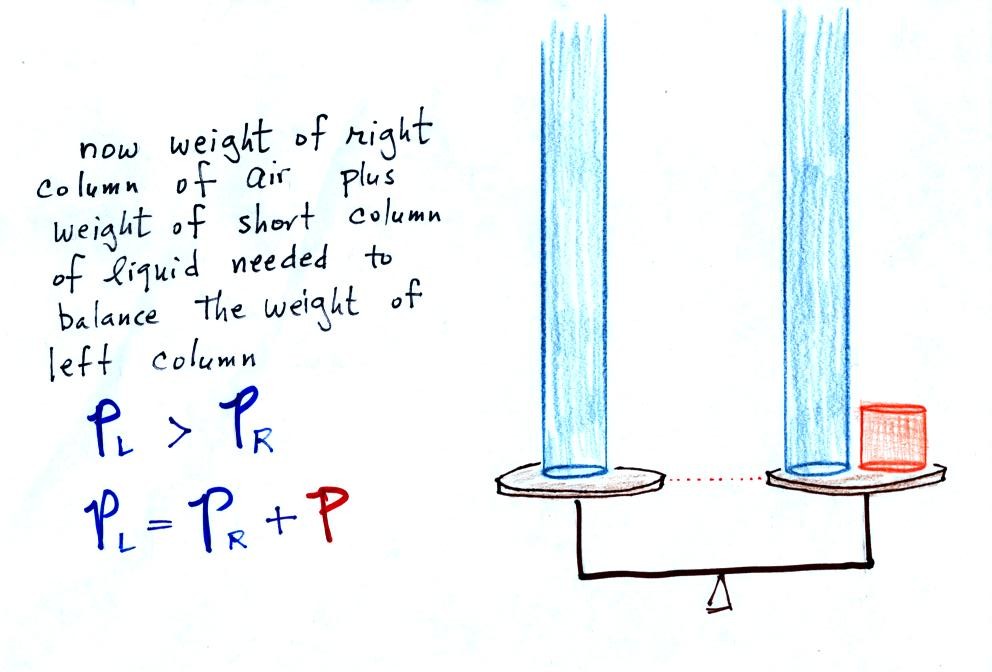
Next we will just go and close off
the right hand side of the
manometer.
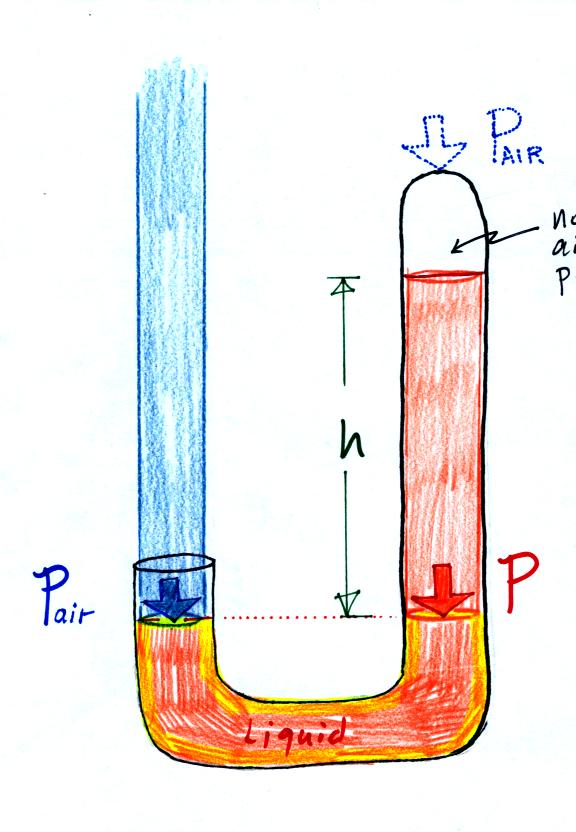
Air pressure can't get into the
right tube any
more. Now at the level of the dotted line the balance is between
Pair and P (pressure by the extra liquid on the
right). If
Pair
changes, the height of the right column, h, will
change. You now have a barometer, an instrument that can measure
and monitor the atmospheric pressure. (some of the letters were cut off
in the upper right portion of the figure, they should read "no air
pressure")

Barometers like this are usually
filled with mercury. Mercury is
a liquid. You need a liquid that can slosh back and forth in
response to changes in air pressure. Mercury is also very dense
which
means the barometer won't need to be as tall as if you used something
like water. A water barometer would need to be over 30 feet
tall. With mercury you will need only a 30 inch tall column to
balance the weight of the atmosphere at sea level under normal
conditions (remember the 30 inches of mercury pressure units mentioned
earlier). Mercury also has a low rate of
evaporation so you don't have much mercury gas at the top of the right
tube (it is the mercury vapor that would make a mercury spill in the
classroom dangerous).
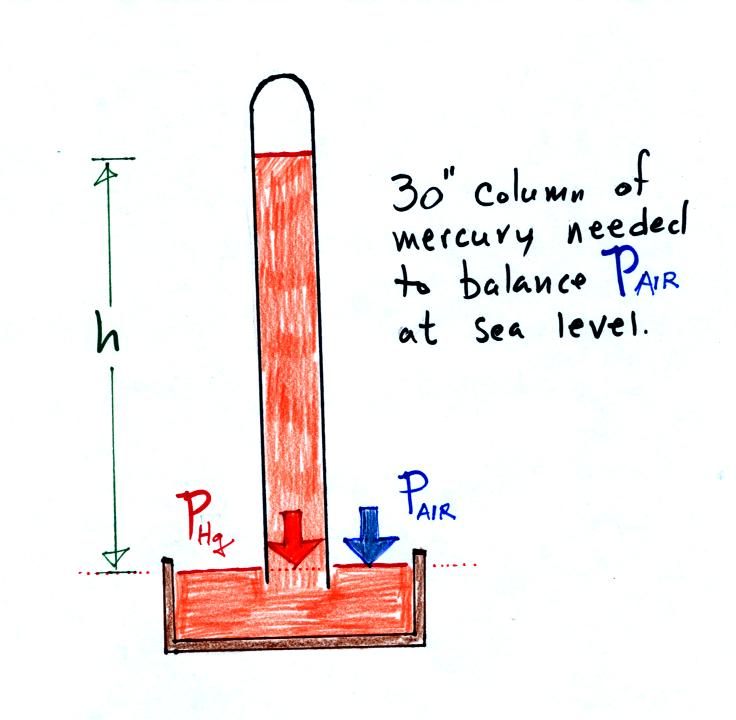
Finally here is a more conventional
barometer design.
The bowl of
mercury is usually covered in such a way that it can sense changes in
pressure but not evaporate and fill the room with poisonous mercury
vapor.
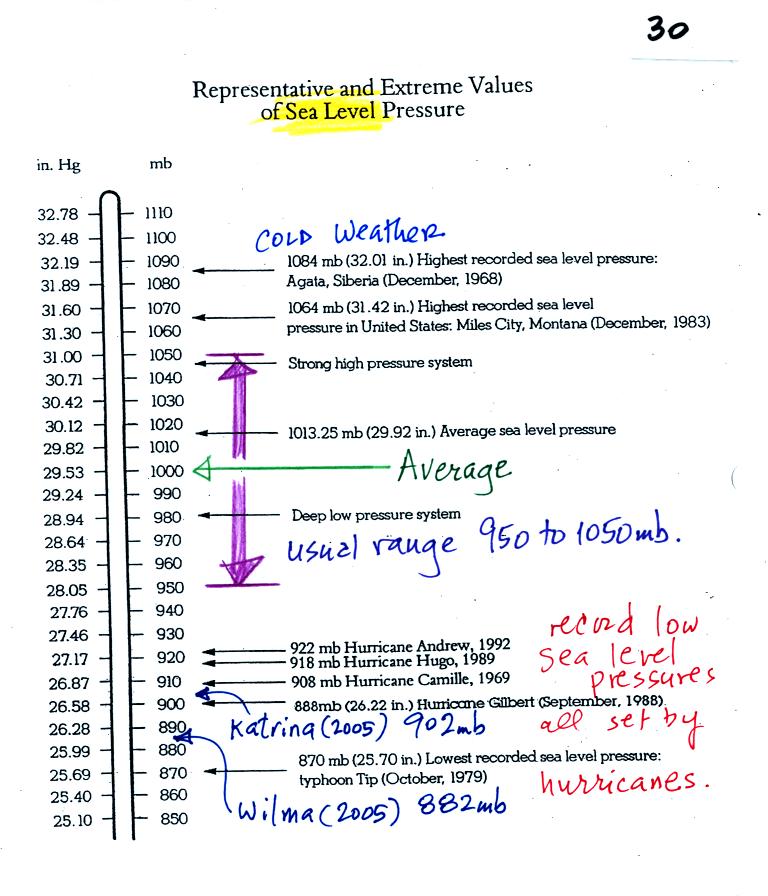
The figure above (p. 30 in the
photocopied Class Notes)
first
shows average sea level pressure values. 1000 mb or 30 inches of
mercury are close enough in this class.
Sea level pressures
usually fall between 950 mb and 1050 mb.
Record high sea level
pressure values occur during cold weather.
Record low pressure
values have all been set by intense hurricanes (the record setting low
pressure is the reason these storms were so intense). Hurricane
Wilma in 2005 set a new record low sea level pressure reading for the
Atlantic. Hurricane Katrina had a pressure of 902 mb.
You'll find a list of the most intense, destructive, and deadly
hurricanes on p. 146a in the photocopied ClassNotes.
Air pressure is a force that pushes
downward, upward, and
sideways.
If you fill a balloon with air and then push downward on it, you can
feel the air in the balloon pushing back (pushing upward). You'd
see the air in the balloon pushing sideways as well.
The air
pressure in the four tires on your automobile pushes down on the road
(that's something you would feel if the car ran over your foot) and
pushes upward
with enough force to keep the 1000 or 2000 pound vehicle off the
road.

A "people pyramid" might help you
to understand what is going on in the atmosphere.
If the bottom person in the stack above were standing on a scale, the
scale would measure the total weight of all the people in the
pile. That's analogous to sea level pressure being determined by
the weight of the atmosphere above. The bottom person in the
picture above must be strong enough to support the weight of all the
people above. That equivalent to the bottom layer of the
atmosphere having enough pressure, pressure that points up down and
sideways, to support the weight of the air above.
In class on Friday we used a stack of bricks to try to understand
that
pressure at any level in the atmosphere is determined by the weight of
the air overhead. Now we will imagine a stack of matresses
to
understand why air density decreases with increasing altitude.

Mattresses are
compressible. The mattress at the
bottom of the
pile is compressed the most by the weight of all the mattresses
above. The mattresses higher up aren't squished as much because
their
is less weight remaining above.
In the case of the atmosphere layers of air behave in just the same way
as matresses.
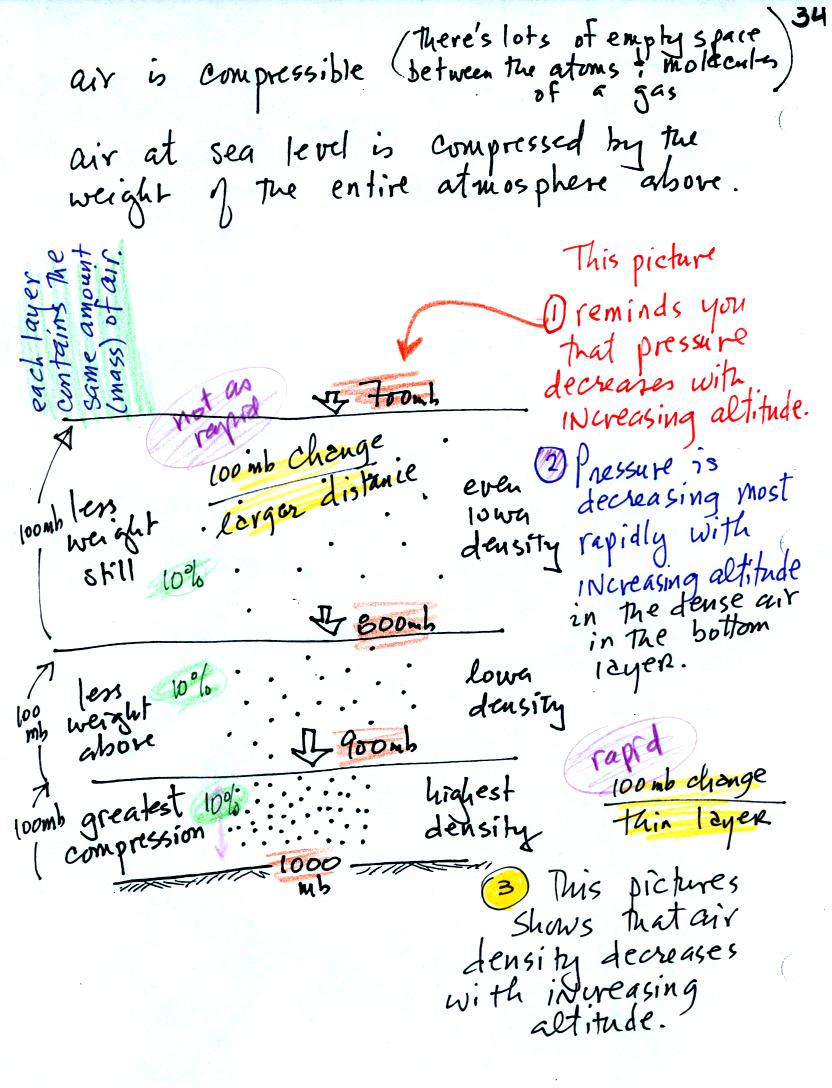
There's a lot of information in
this figure. It is worth
spending a minute or two looking at it and thinking about it.
1. You can first notice and remember that pressure
decreases
with increasing altitude. 1000 mb at the bottom decreases to 700
mb at the top of the picture.
Each layer of air contain the same amount (mass) of air. You
can
tell because the pressure decrease as you move upward through each
layer is the same (100 mb). Each layer contains 10% of the air.
2. You again notice something that we covered earlier: the most
rapid
rate of pressure decrease with increasing altitude is in the densest
air in the bottom air layer. It takes almost twice the distance
for pressure to decrease from 800 mb to 700 mb in the top most layer.
3. The densest air is found in the bottom layer
because the air is
squeezed into a smaller volume than the other layers. Air density
decreases with increasing altitude.
Class
concluded with a demonstration of the upward force
caused by air
pressure.
The demonstration is summarized on p. 35a in the photocopied Classnotes.
Here's a little bit more detailed and more complete explanation of
what is going on. First the case of a water balloon.
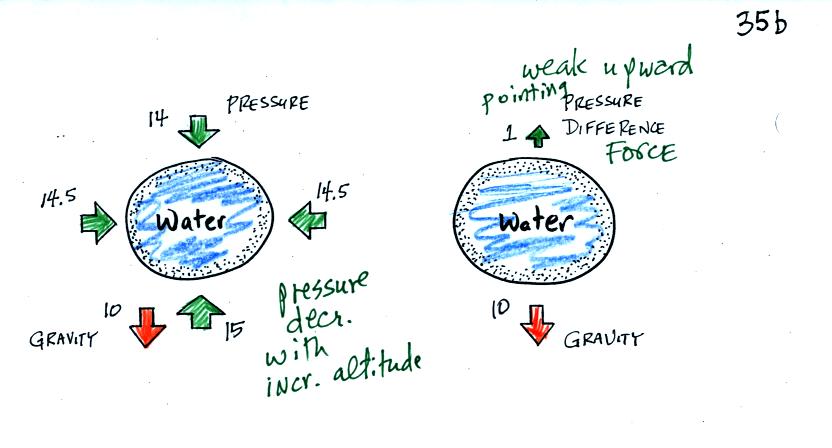
In the demonstration a wine glass is filled with water. A small
plastic lid is used to cover the wine glass. You can then turn
the glass upside down without the water falling out.
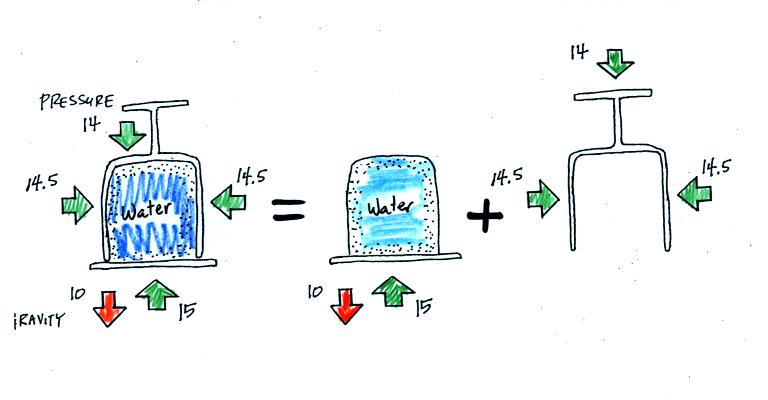
The demonstration was repeated using a 4 Liter flash (more than a
gallon of water, more than 8 pounds of water). The upward
pressure force was still able to keep the water in the flask (much of
the weight of the water is pushing against the sides of the flask which
the instructor was supporting with his arms).
